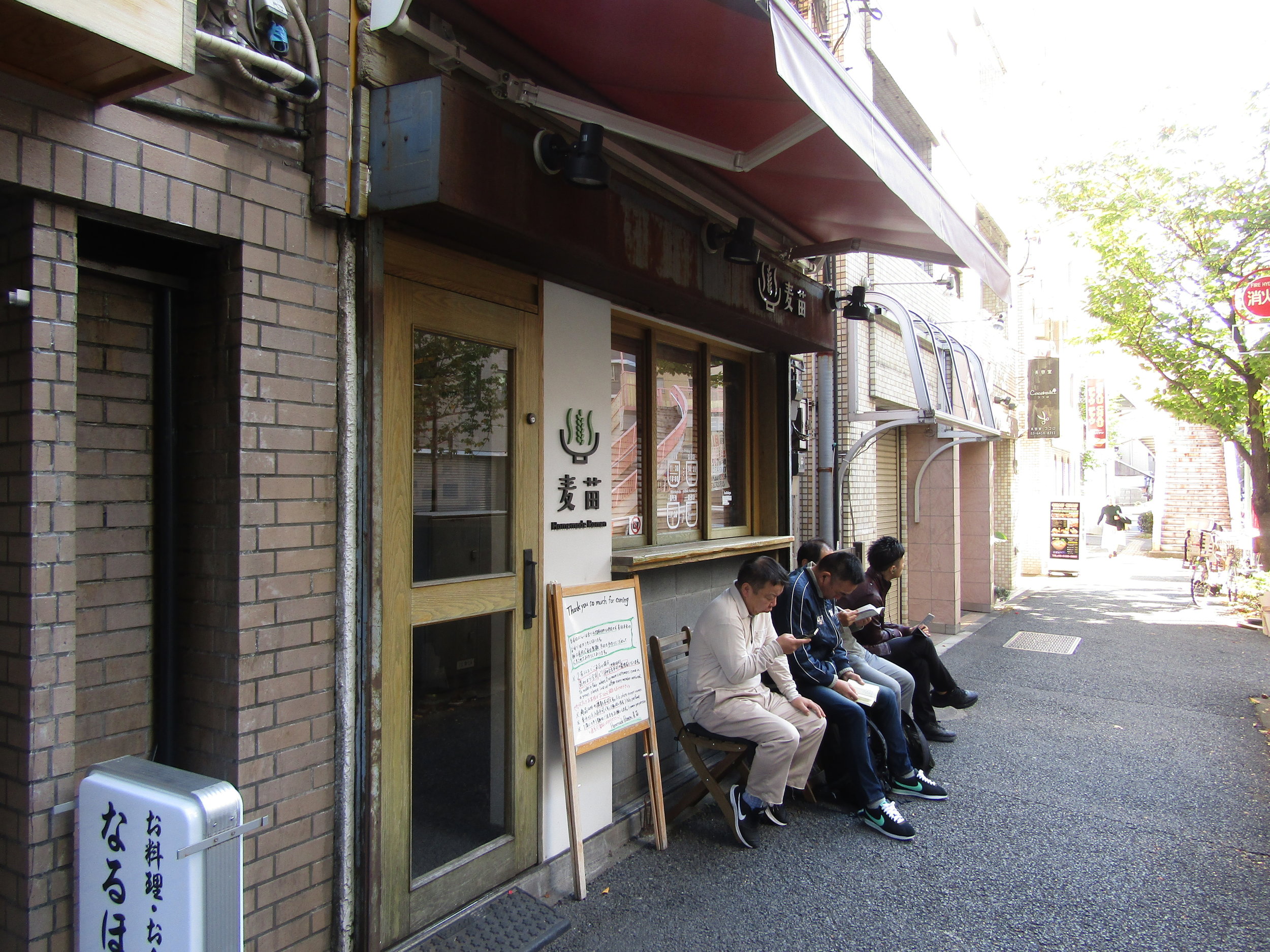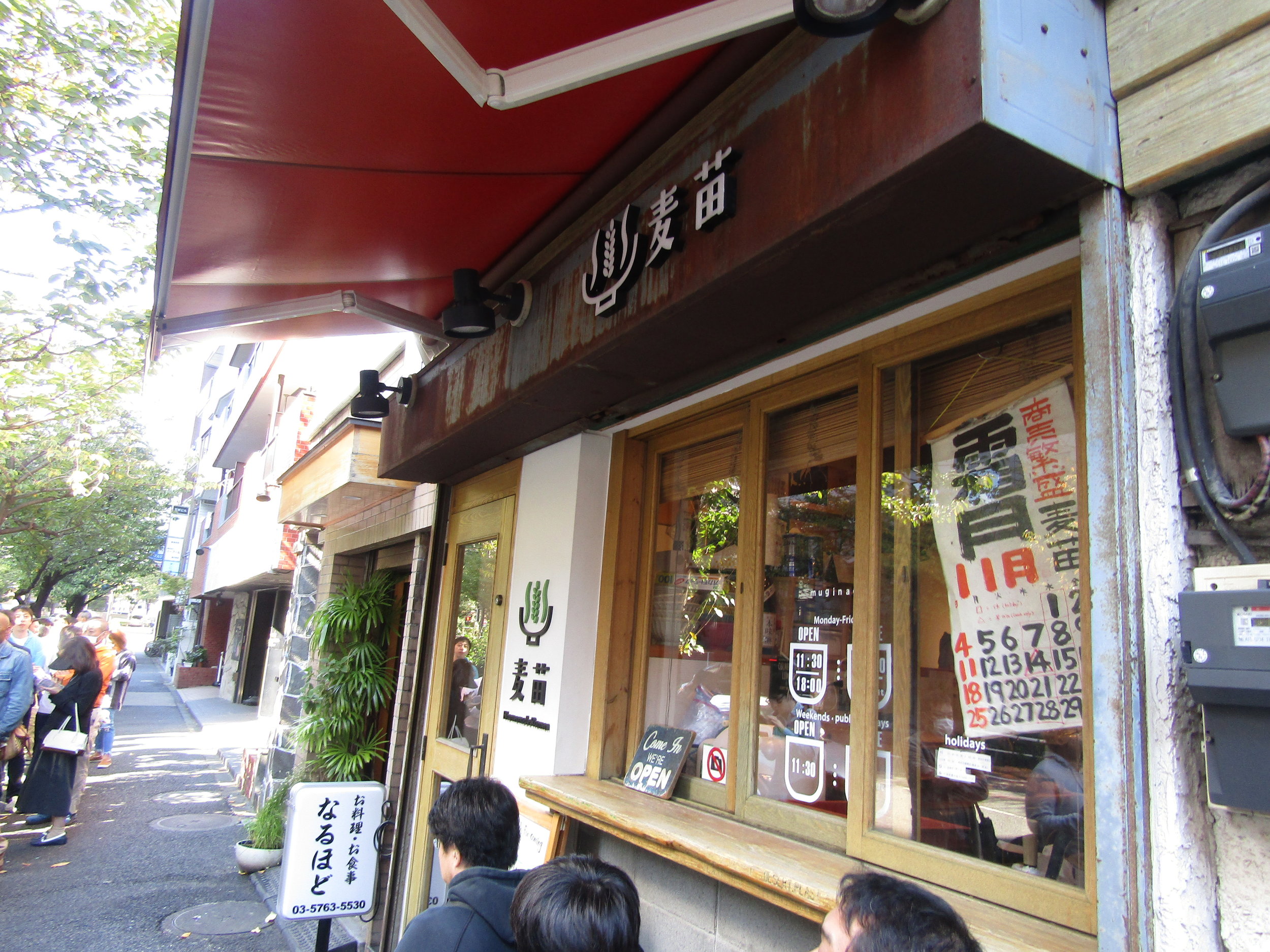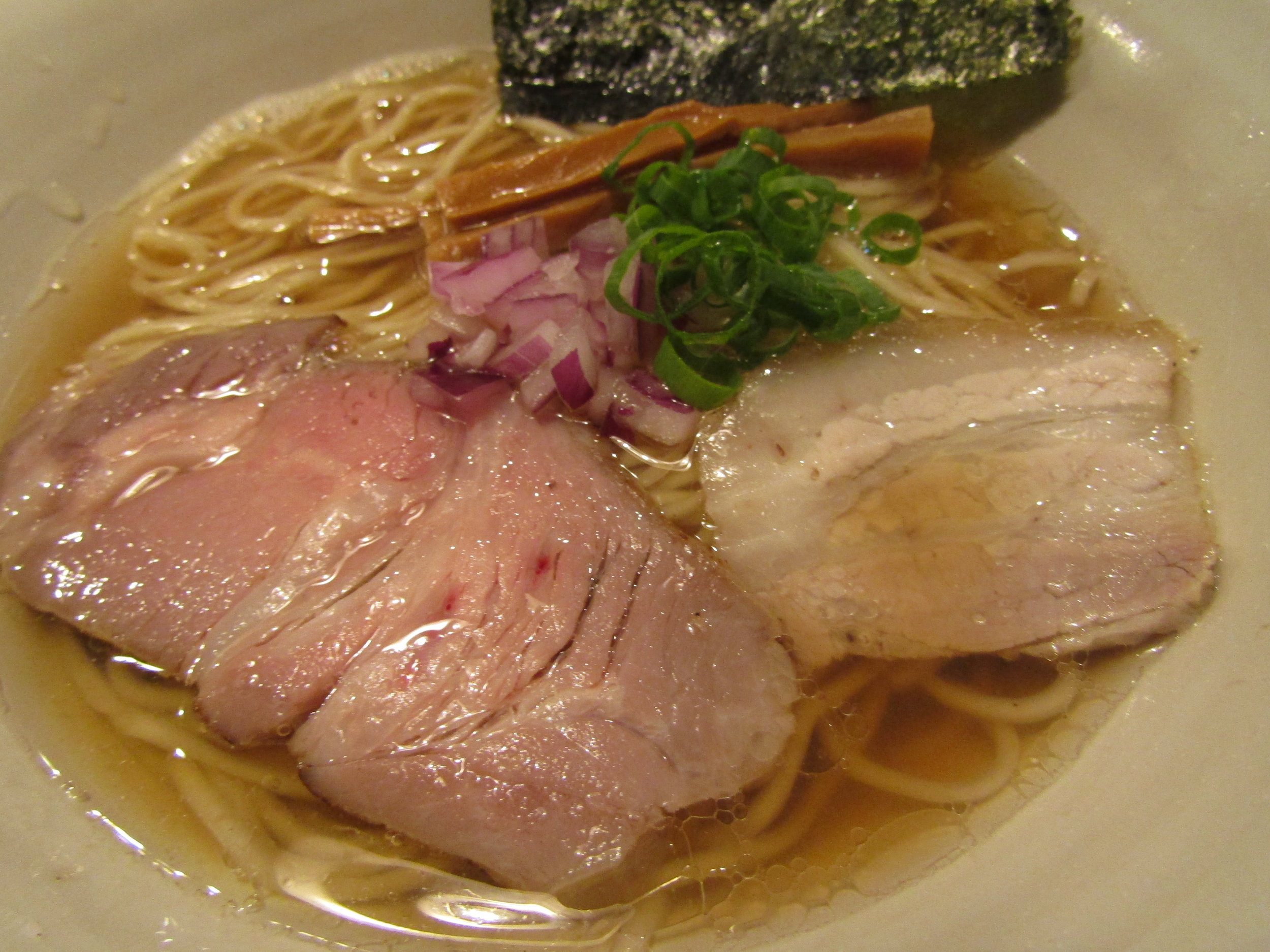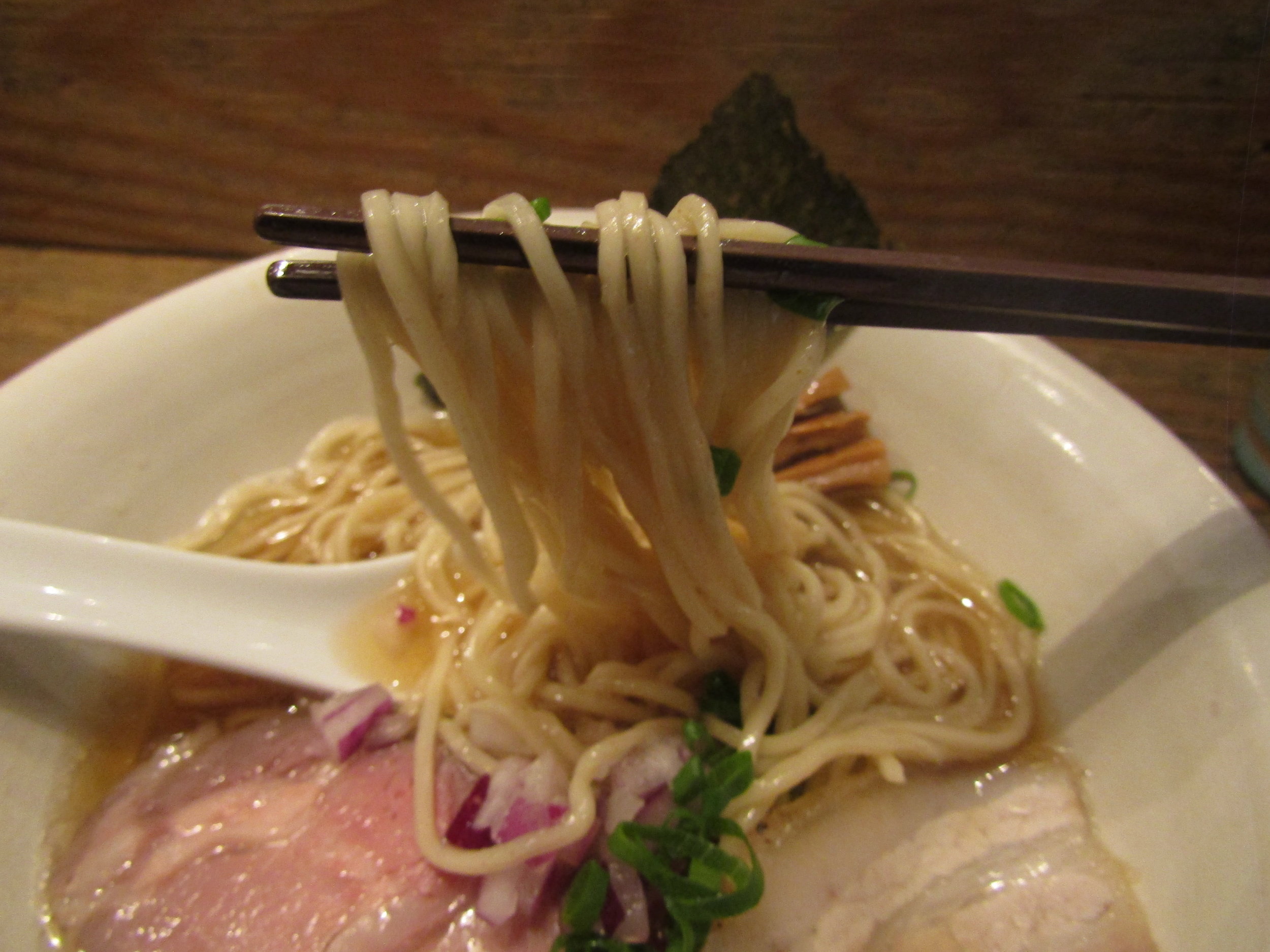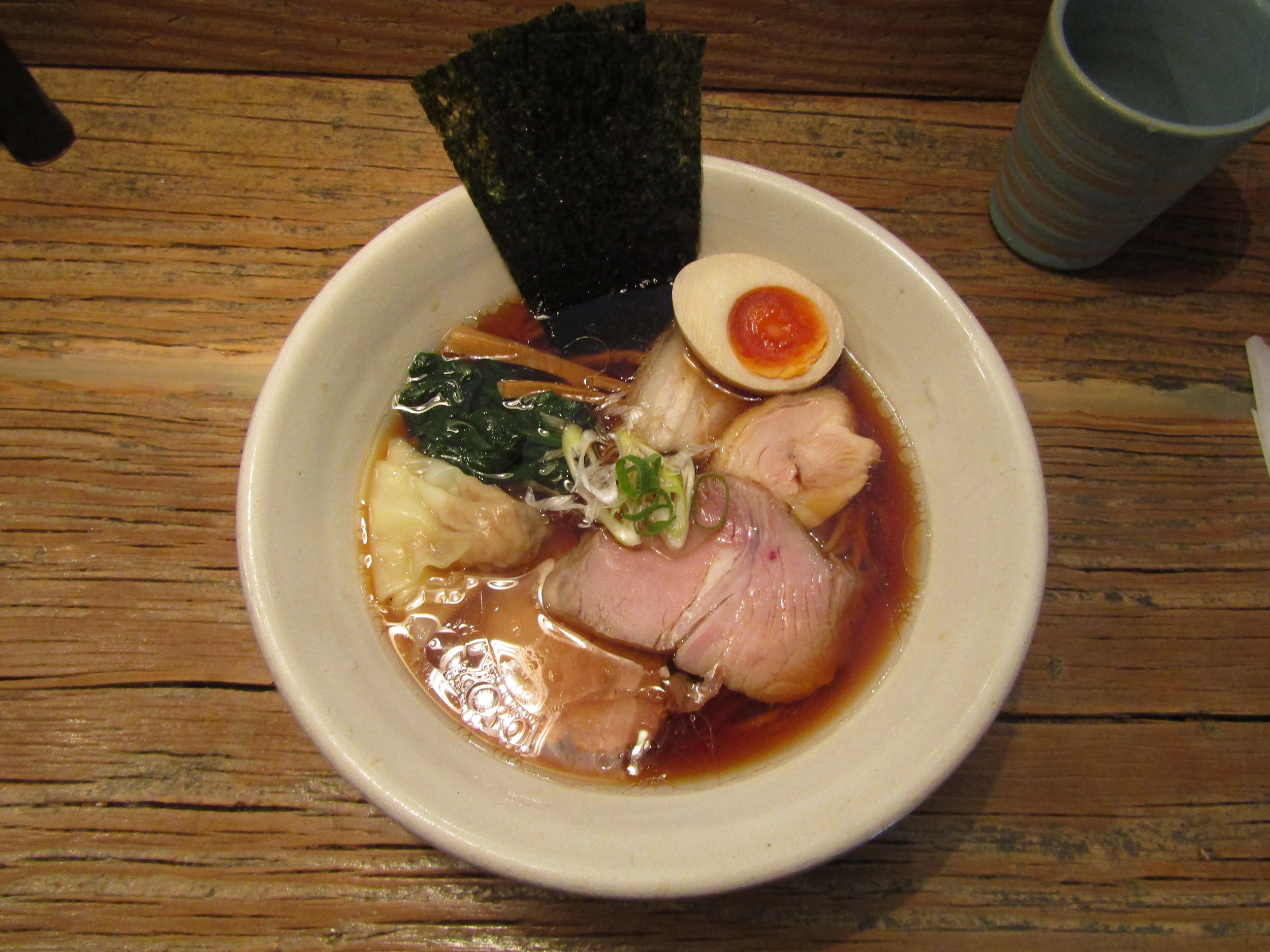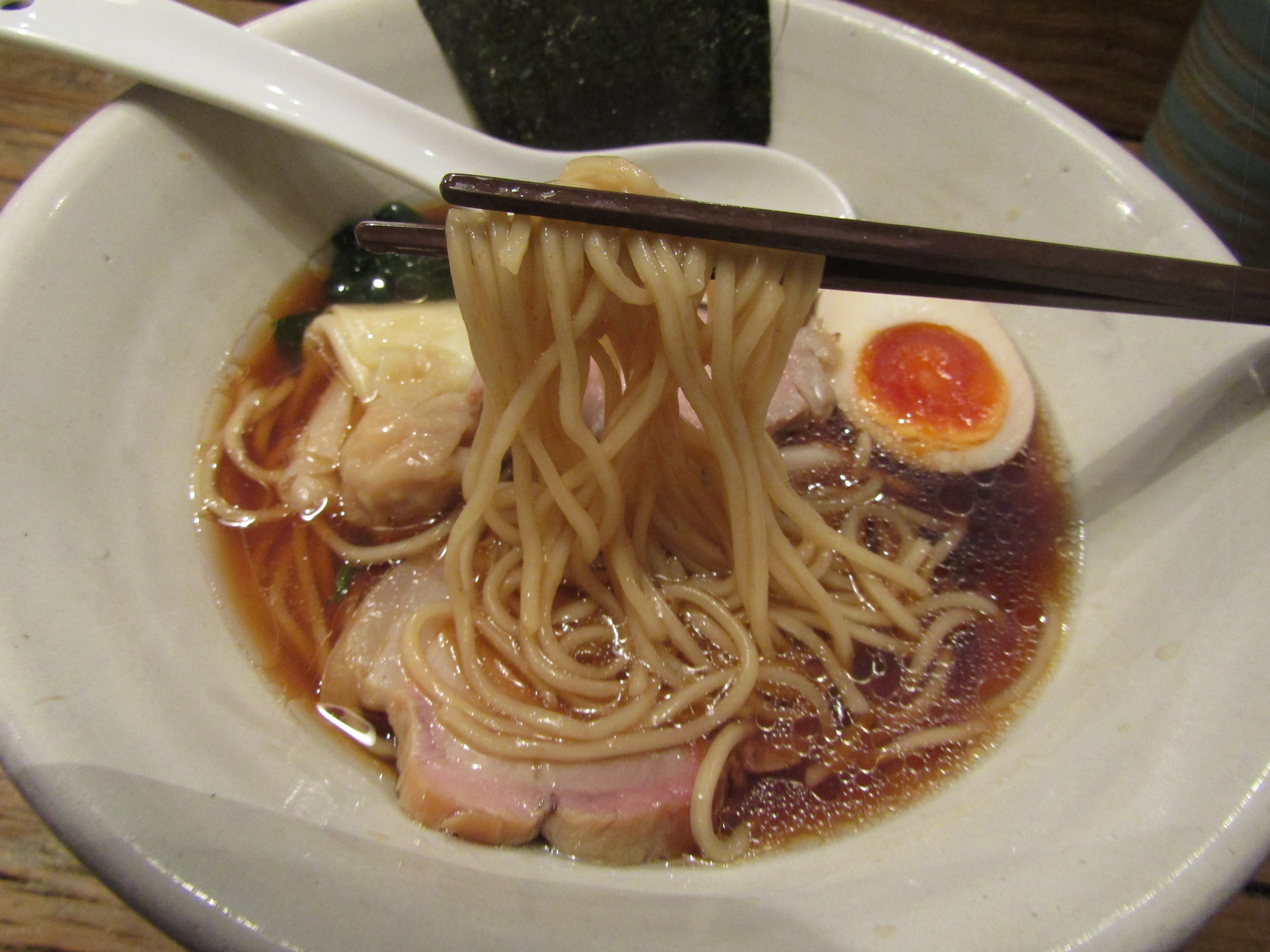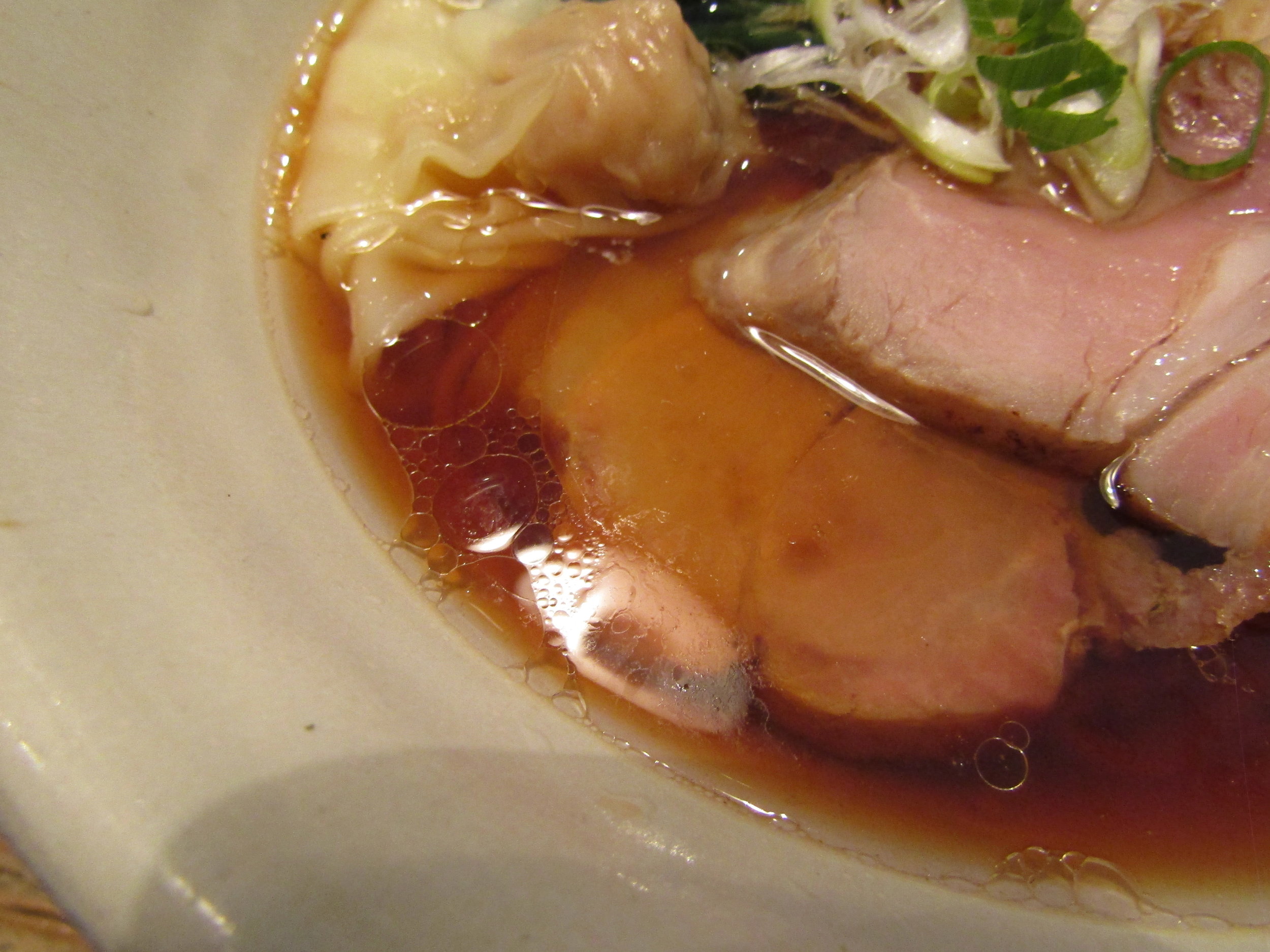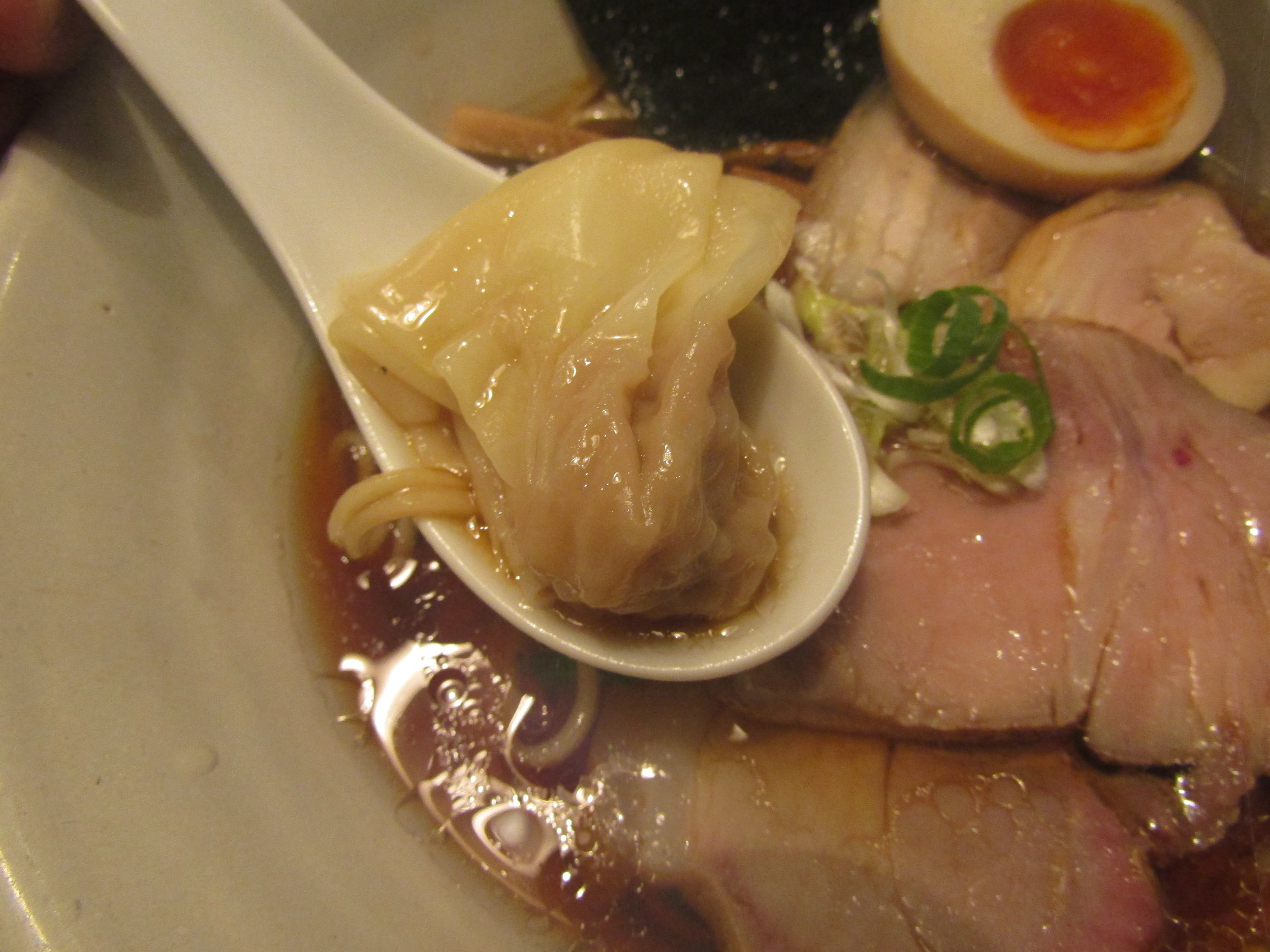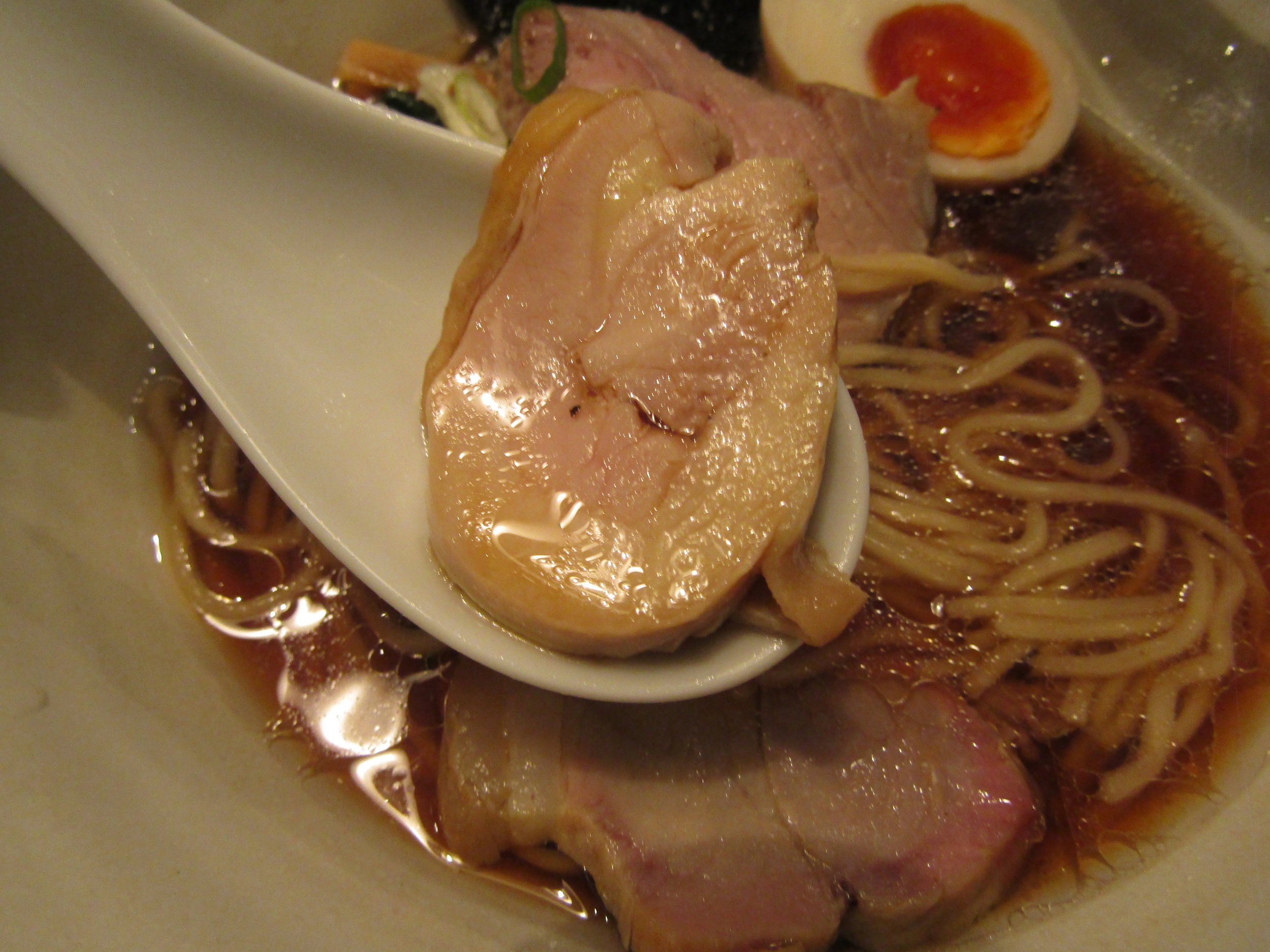Homemade Ramen Muginae (Homemade Ramen麦苗); Crowning Jewel, Oomori
After having an extra early morning visit to my office, I ended up missing breakfast and craving a nice, warming meal. Having never gone to the famous Homemade Ramen Muginae, I decided today would be the day as it was still 9:30am and would only take me a few minutes to get there. I figured I would check out the store, take my pictures before anyone lines up, have a coffee and line back up at around 1030. Upon arriving at the restaurant at 9:45 I was welcomed with a line of about 15 people. There goes that plan. Well, better line up then. What transpired was something I haven’t seen in years. By the time 11 rolls around, the line was 100 deep. 30 minutes before opening and there was already a line reaching triple digits. Goes to show that winning a bronze medal from Tabelog will help attract customers no matter the time and length of its line. These people were coming from all corners of the world. I can hear Japanese, English, Spanish, Korean, Chinese…I think I even heard Russian, or something close to it (as I can’t tell the difference between Eastern European languages). I was hungry and a bit grumpy from my two hour long wait, but the staff was incredibly friendly and even allowed me to order both their Niboshi and Shoyu Ramen varieties so I was at least very excited.
The restaurant is a short five minute walk from Oomori Station just south of Shinagawa. Close by is the Shinagawa Aquarium and is close to Tokyo Bay so a breeze will sometimes bring some saltwater fragrance in to the air. The exterior is quaint and reminded me more of a cafe than a ramen shop. There’s about 4 chairs outside right by the entrance, but the line will circle around to the nearby park by noon. Inside the shop is clean and rustic at the same time. Some baseball memorabilia hang on the walls (might be a Shohei Otani fan with the Angels gear) and the ticket machine sits right at the entrance. I purchased my regular Nibo Ramen and Tokusei Shoyu Ramen (extra toppings) tickets before finding my seat in front of the master. Water was already waiting for me on the table as I handed my tickets and I got comfy and enjoyed my view of the chef at work.
Photos besides the ramen itself is prohibited inside, so I’ll try my best to describe the action. The chef begins by warming the bowls over the noodle boiling station as he portions out the soup to warm in a smaller soup pot. Next he carefully weighs out individual noodle portion before removing the warmed bowls and cooking the measured noodle portions. As the noodle cooks, each bowl is filled precisely with just enough soup and as soon as he pours out the soup for each bowl, the noodles are ready, strained and placed carefully in to the soup. Toppings are placed before carefully bringing your bowl to you.
I started with the Nibo Ramen. First thing I noticed was how clear the soup was. A brownish tint from the dried fish gave it a bit of a bronze color, but I could see straight through as it magnified my noodles. What surprised me was how little to no fishy aftertaste remained in the broth. It was by far the cleanest fish based soup I have had so far and it was as if I was drinking pure seafood umami. Flavored with a Shio tare, it was definitely salty, but nothing that would make you grab a glass of water. Just enough sodium that your mouth is a little parched keeping you going in spoonful after spoonful. The homemade noodles has a bit of wheat (or maybe it was barley) kneaded in and paired amazingly well with the soup. Has enough backbone to give a chew and unique flavor from the wheat to match the delicate soup. The diced red onions was a nice touch to vary the texture in the bowl, green onions gave a nice color, and their homemade bamboo shoots were thin, but slightly crunchy. The char siu was nice and tender and didn’t overpower the soup which I really like in a Niboshi ramen. Far too many times, the char siu marinade will overpower the delicacy of the soup, but you could definitely tell the chef was conscious of that and kept it just lightly seasoned.
As I polished off that first bowl, I gave the chef my request for the Shoyu and was ready for me in a matter of minutes. The Shoyu is quite dark and had a roasted, smoky flavor to the soy sauce tare. I was taken aback by how unique the flavor was as most top ramen restaurants seemed to follow the same mundane steps for their Shoyu ramen. The broth was like the chicken version of the Niboshi ramen, very clean and pure. I can tell just by the flavor that the broth was pulled through a nice, low simmer, and not overdone as to extract any unneeded collagen, fat, and marrow from the bones. The dark roasted Shoyu tare paired perfectly with this broth as it helps accentuates the chicken flavor. Its a bit hard to explain, but the soup was both gentle from the broth, but incredibly flavorful due to the tare and it came together harmoniously. As I had ordered the Tokusei, or extra toppings, the bowl came topped with extra roast pork, steamed chicken, won ton, half a marinated egg, green onions, a few slices of seaweed, homemade bamboo mema, and a bit of blanched mustard leaves. I did wish it had something like the onions from the Nibo Ramen to give the bowl a bit more variety in textures, but the bamboo shoots definitely added some crunch. The steamed chicken was the highlight for me aside from the noodles and soup. I think it may have been cooked via sous-vide as it was incredibly tender. It soaked up the soup incredibly well and just added to the overall chicken flavor of the bowl.
After having both ramen bowls, I can understand why Homemade Ramen Muginae was deserving of the bronze medal. The broth for both Nibo and Shoyu ramen are incredibly delicate and gentle, showing the immense care thats required to create such a delectable soup. The tare is made precisely to pair with each broth and the toppings are both well prepared and carefully planned. In my opinion, what makes a ramen move from just a top 100 to an elite tier is how harmonious the bowl is. Some place can have incredible soup, others are known for their char siu or won ton, but Muginae is known for their bowl of ramen as a whole. Consider coming here for a visit, but remember, its popularity is growing so be wary of the crowd and lines.

